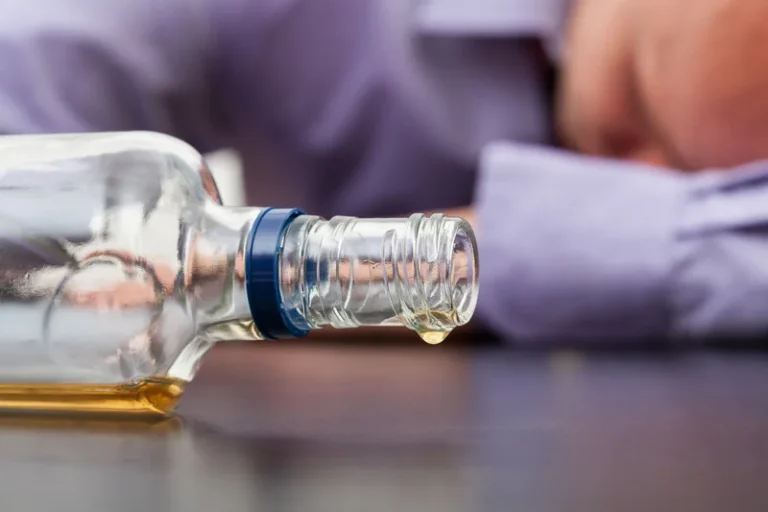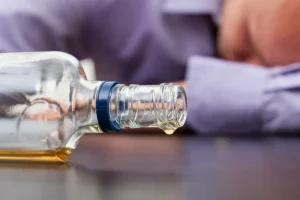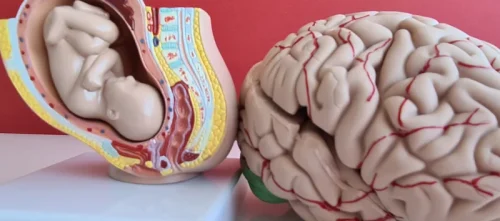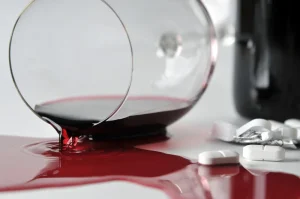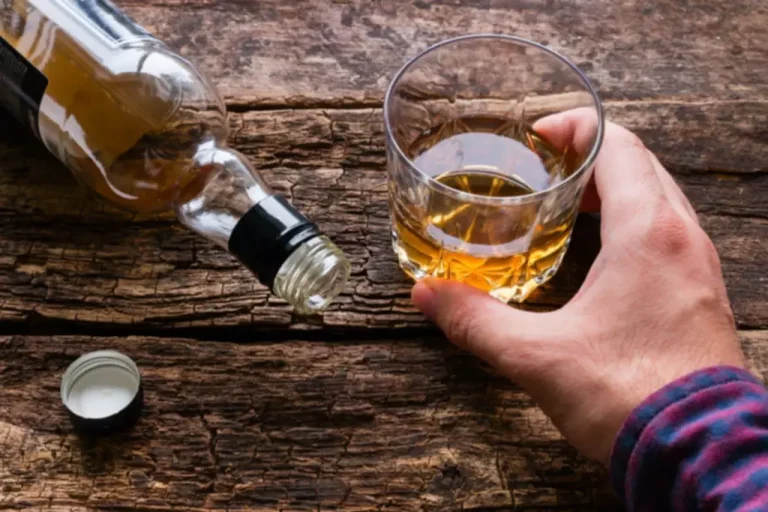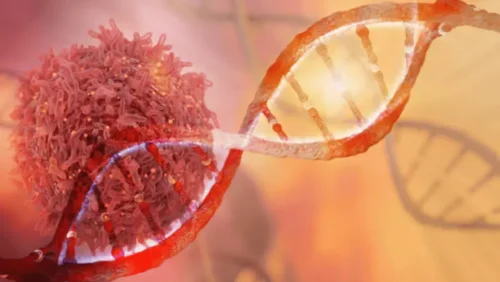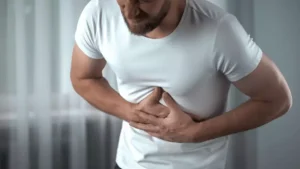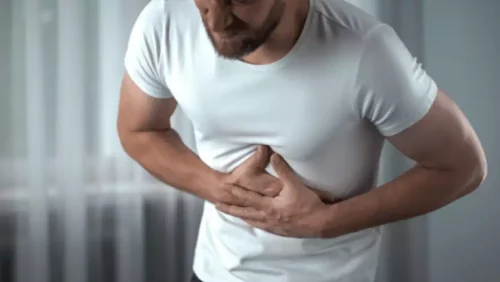
Dosing of opioids will probably need to be altered if a person is either acutely intoxicated or has impaired liver function due to chronic use. This information can also be useful in conducting brief interventions geared toward changing alcohol use. A major trauma is a life-changing event that may be used as an impetus to change addictive behaviors. Several studies have demonstrated the effectiveness of brief interventions to reduce alcohol use in trauma centers.

Alcohol’s Effects on the Body
Finally, management of chronic pain in AUD patients cannot be optimized without considering the reciprocal risks and benefits of the treatment choices on exacerbating drinking patterns or increasing the risk of relapse. Opioids in particular may not be appropriate for managing pain in individuals with AUD, as they probably engage the same brain reward pathways as in AUD. Indeed, there is evidence for the involvement of the endogenous cannabinoid system in the pharmacological and behavioral effects of alcohol (Perra et al., 2005). However, gabapentin, a GABA analogue anticonvulsant medication that also is used to treat pain, has been shown to have the benefit of reducing cravings and to significantly delay relapse in individuals with AUD (Brower et al., 2008). There are two major concerns when treating patients for pain who have chronic histories of alcohol and drug abuse. Perry argued that patients who are abusing alcohol and other drugs should be getting more pain medication, not less, in order to compensate for their developed tolerance [10].

Alcohol & trauma
- Dr. Roberto and her team are continuing to investigate how the inflammatory proteins identified in this study might be used to diagnose or treat alcohol-related chronic pain conditions.
- Our review of the literature identified a range of biopsychosocial factors and health-related behaviors (e.g., tobacco use, illicit drug use) that may covary with both alcohol use and pain.
- Because pain can be a significant risk factor for relapse in those recovering from AUD, there is an urgent need to understand the links between AUD and development of chronic pain.
- If you’re taking medications to manage your pain, talk to your doctor or pharmacist about any reactions that may result from mixing them with alcohol.
- The CeA receives functionally distinct inputs from the pontine parabrachial area (PB, nociceptive information) and basolateral amygdala (BLA, sensory-affective information) that are magnified in chronic pain states (Ikeda et al., 2007; Neugebauer et al., 2003).
- In a randomized controlled study, the same group showed that trauma recidivism was halved by a brief motivational intervention [4].
We also found a higher burden of MDE among ALC women compared to ALC men and CTRL men and women. Understanding the similarities and differences between the ALC and CTRL cohorts in depressive disorders is particularly intriguing because alcohol abuse is more prevalent in men than in women [31], while chronic pain disorders and depressive disorders tend to have a higher prevalence in women [32]. Moreover, in a longitudinal study, Boissoneault and colleagues [33], found that depression was predictive of alcohol problems only in women but not in men. Impaired cognition can modulate the cognitive-evaluative dimension of pain experiences, both as a reinforcing factor for alcohol-seeking behavior (as alcohol is known to alleviate pain) and also in how pain is perceived.
About this pain and alcohol addiction research news
First, the employment of more adaptive approaches to pain-coping may depend on the degree to which an individual believes that consuming alcohol will sufficiently diminish pain reactivity. That is, drinkers who believe or come to learn that alcohol can provide adequate pain relief may not engage or develop more adaptive coping strategies (e.g., Cooper et al., 1988). Second, drinkers who neglect to utilize pain-coping behaviors or are unsuccessful in their employment of coping to curtail pain could, subsequently, experience increased motivation to drink.
Drinking to Ease Chronic Pain Ultimately Makes It Worse
According to many studies, alcohol-induced autonomic neuropathy (AAN) not only leads to potential damage to internal organs but also increases the mortality rate of patients [157, 158]. Alcohol use, which is not that good at addressing chronic pain anyway, ultimately makes the pain worse. Additionally, prolonged, excess consumption of alcohol can actually cause small fiber peripheral neuropathy.
This type of neuropathy causes symptoms like pain, tingling, “pins and needles” sensations in the extremities, or altered sensations, especially in the feet. Whatever short-term relief from pain alcohol may provide (at least at first), it is far outweighed by more pain over the long term. Overall, we found that the incidence of depressive disorders was the highest among ALC women and the lowest among CTRL men. However, PDD was higher in ALC women than in ALC men, in both groups with no history of chronic pain. The incidence of PDD was comparable in ALC men and ALC women with a history of back/neck pain or severe headaches.
Anterior cingulate cortex, insular cortex, and prefrontal cortex are linked to affective-motivational processing aspects of pain, such as finding it to be unpleasant and bothersome even though sensory-wise it may be considered to have low intensity (Apkarian et al., 2005; Auvray, Myin, & Spence, 2010; Gu et al., 2012). Attention, expectation, and reappraisal are thought to be the most important contributing factors for the cognitive modulation of pain (Porro et al., 2002; Wiech, Ploner, & Tracey, 2008). Notably, recent studies have highlighted a primary link to activity in prefrontal cortex (Seminowicz & Moayedi, 2017) and to prefrontal volumetric differences in response to cognitive behavioral therapy in patients with chronic pain (Seminowicz et al., 2013). Because pain can be a significant risk factor for relapse in those recovering from AUD, there is an urgent need to understand the links between AUD and development of chronic pain. As mainly central rather than peripheral mechanisms are thought to be involved in the chronification of pain, identifying structural and functional differences in the brain in relation to AUD is key to recognizing links between the two conditions.

Experimental studies should be employed to test causal relations between pain and alcohol use, and to identify underlying mechanisms. First, despite evidence that persons with chronic pain endorse the use of alcohol to cope with pain, we are not aware of any experimental studies that have explicitly tested whether pain may motivate alcohol approach or consumption. Future experimental research should test whether situational pain increases craving for alcohol or subsequent alcohol consumption. Second, relatively few experimental studies have been conducted to test effects of alcohol on pain responding. Although previous research has observed variations in analgesic effects across participant samples and alcohol doses, future research would benefit from examining potential mediators/moderators of alcohol-induced analgesia among humans.
This dynamic can present unique challenges for recovering individuals suffering from acute and/or chronic pain, as well as for the physicians responsible for treating both conditions. The investigators found that, of the problem drinkers, approximately 43% of men and 44% of women reported experiencing moderate to severe pain, but in nonproblem drinkers, only 28% of men and 33% of women reported that level of pain. Likewise, pain interfered with daily activities ‘moderately’ to ‘extremely’ among 34% of men and 29% of women with drinking problems, compared to 16% and 19% of the men and women without drinking problems. Importantly, almost 38% of current problem drinkers reported using alcohol to manage pain, whereas in contrast, only 15% of nonproblem-drinking men and 13% of nonproblem-drinking women did so.
Most people don’t realize that what they perceive as reality is actually just a set of beliefs. Therefore, we form sets of beliefs to interpret the reality around us based on our personal experiences, observations, and what is relevant to our needs. This absurd belief has led me to replace many meals with alcohol, thinking it’s a savvy way to cut calories.
Over time, AUD can trigger the development of numerous chronic diseases, including heart disease, stroke, liver disease and some cancers. Tolerance develops to alcohol’s analgesic effects with repeated exposure through physiological mechanisms that include learning mechanisms. When alcohol is administered to rats in a liquid diet for 10 days, analgesic effects peak within 2–4 days and subside with continued administration until pain responses return to baseline levels by day 10 (Gatch, 2009). For example, rats receiving alcohol injections in a distinct environment developed tolerance to alcohol’s analgesic effects regardless of whether they also received tail-flick tests in the same environment (Tiffany et al., 1987). Learning mechanisms do not appear to influence tolerance development when rats receive alcohol in a liquid diet, however, because comparable tolerance effects were observed regardless of whether repeated pain tests were given during alcohol administration (Gatch and Lal, 1999). These studies suggest that conditions for developing tolerance to alcohol analgesia vary, and that experiencing sustained or exaggerated analgesic effects in response to alcohol may involve learning mechanisms as observed with tolerance to other actions of alcohol.
Approximately 18 million Americans suffer from alcohol abuse or dependence, contributing to 100,000 deaths and $185 billion in costs annually (Grant et al., 2004a). Although the relationship between pain and opiate misuse has been extensively studied, considerably less attention has been devoted to the study of pain and alcohol use despite evidence that alcohol ingestion can acutely reduce pain. In addition, associations between chronic pain conditions and alcohol problems have been reported with episodes of alcohol abuse antedating chronic pain in some people and alcohol dependence emerging after the onset of chronic pain in others (Katon et al., 1985). In light of the great public health impact of both alcohol dependence and chronic pain, a mechanistic understanding of this relationship is important for preventing and treating both problems.
This may be particularly important for patients with addictions who are not used to experiencing the full range of emotions when sober. We would also recommend avoiding PRN dosing for opiates and, instead, use a fixed-dosing schedule in order to avoid the cycle of unmanaged pain, followed by significant https://rehabliving.net/ side effects due to ‘catching up’ with the pain. Consideration of a PCA for all patients who are having difficulty reaching manageable pain levels is also crucial. This will allow the patient to feel more in control of their environment and they will probably use less medication as a result.
Alcohol use disorder (AUD), which encompasses the conditions commonly called alcohol abuse, alcohol dependence and alcohol addiction, affects 29.5 million people in the U.S. according to the 2021 National Survey on Drug Use and Health. Pain is a multidimensional and subjective experience that in its acute form is essential for survival, but in chronic form, pain is a disorder that negatively impacts quality of life. Neural substrates involved in initiating and maintaining chronic pain include dysfunction in descending pain pathways and reward network circuitry.
Twin studies and studies of the offspring of individuals with AUD have shown that family history of AUD mediates the risk of AUD. But controversy exists regarding whether family history is a risk factor through genetic mechanisms, or through environmental mechanisms (e.g., growing up in a household with parents with AUD), or through the interaction of genes and environment. Alcohol Use Disorder and pain are complex conditions having multiple additional etiological impacts reviewed elsewhere (Oscar-Berman et al., 2014; Zale et al., 2015). The former simply want access to healthcare they’ve been denied by law enforcement and public health bureaucrats; the latter want you to endorse their habit, pay for their needles and quit asking why homeless people use drugs on street corners as your children walk by on their way to school. Activation of spinal cord microglia, mGlu5 spinal cord receptors, and hypothalamic-pituitary-adrenal axis appear to be implicated in this process [92,93,94,95,96,97].
These data suggest that drinking in alcoholics may be motivated in part by a desire to alleviate ethanol withdrawal-induced hyperalgesia. Whether alcohol alleviates neuropathic pain induced by chronic alcohol use remains to be demonstrated. Alcohol dependence also was found https://rehabliving.net/is-marijuana-addictive-national-institute-on-drug/ to be a major predictor of pain severity following serious injury (Castillo et al., 2006; Holmes et al., 2010). Likewise, people with chronic pain conditions are more likely to have family members with drinking problems (Goldberg et al., 1999; Katon et al., 1985).
Chronic alcohol consumption may make people more sensitive to pain through two different molecular mechanisms—one driven by alcohol intake and one by alcohol withdrawal. That is one new conclusion by scientists at Scripps Research on the complex links between alcohol and pain. It was shown that patients with liver cirrhosis (regardless of its etiology) present dysfunctions in ANS, primarily within the vagus nerve [170].
One study even showed that these mood-altering drugs, particularly antidepressants, are prescribed frequently to those who abuse alcohol and other drugs [14]. In a study of heroin addicts, only 1.9% of subjects believed that their habits began with prescriptions given for medical reasons [15]. Marks and Sachar showed that in only three out of 1900 cases (0.16%) were the addictions attributed to possible complications of previous medical treatment [16]. In the Boston Collaborative Drug Surveillance Program, only one out of 11,882 hospitalized patients who had no prior history of substance abuse and who received narcotics while in the hospital developed a drug dependency [17].
Compared to healthy controls, individuals suffering from chronic back pain or complex regional pain syndrome have a smaller hippocampus, a brain structure that is involved in memory formation and consolidation (Mutso et al., 2012). In a mouse model of chronic pain, it was shown that production of new neurons in the hippocampus failed. This finding was surprising given that the hippocampus is a brain region in which new neurons can grow both in adult humans and in adult mice (Mutso et al., 2012). The prefrontal cortex, amygdala, and nucleus accumbens are all essential components of the alcoholism/addiction circuitry (Volkow & McLellan, 2016). This paper provides an overview of research, guidelines, and clinical considerations for the use of medications for chronic pain in the management of patients with an alcohol use disorder. A review of the literature identified randomized controlled trials, epidemiological cohort studies, consensus guidelines, and one systematic review and meta-analysis.



